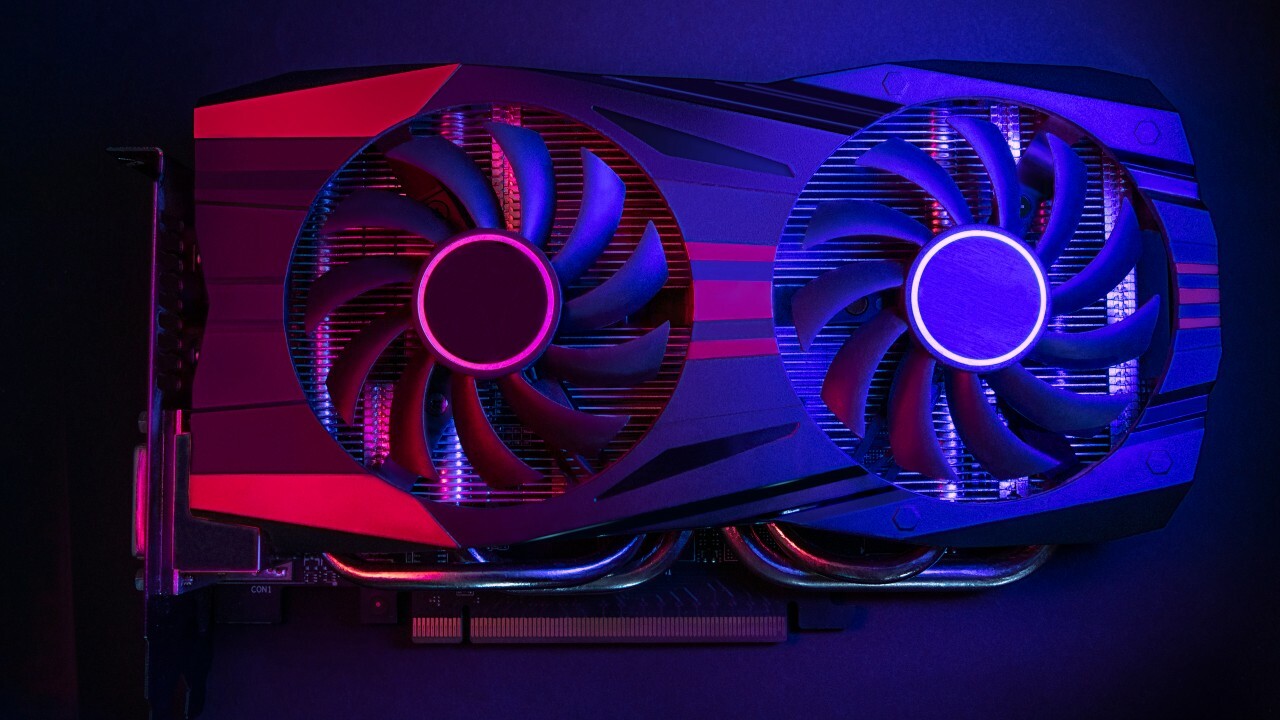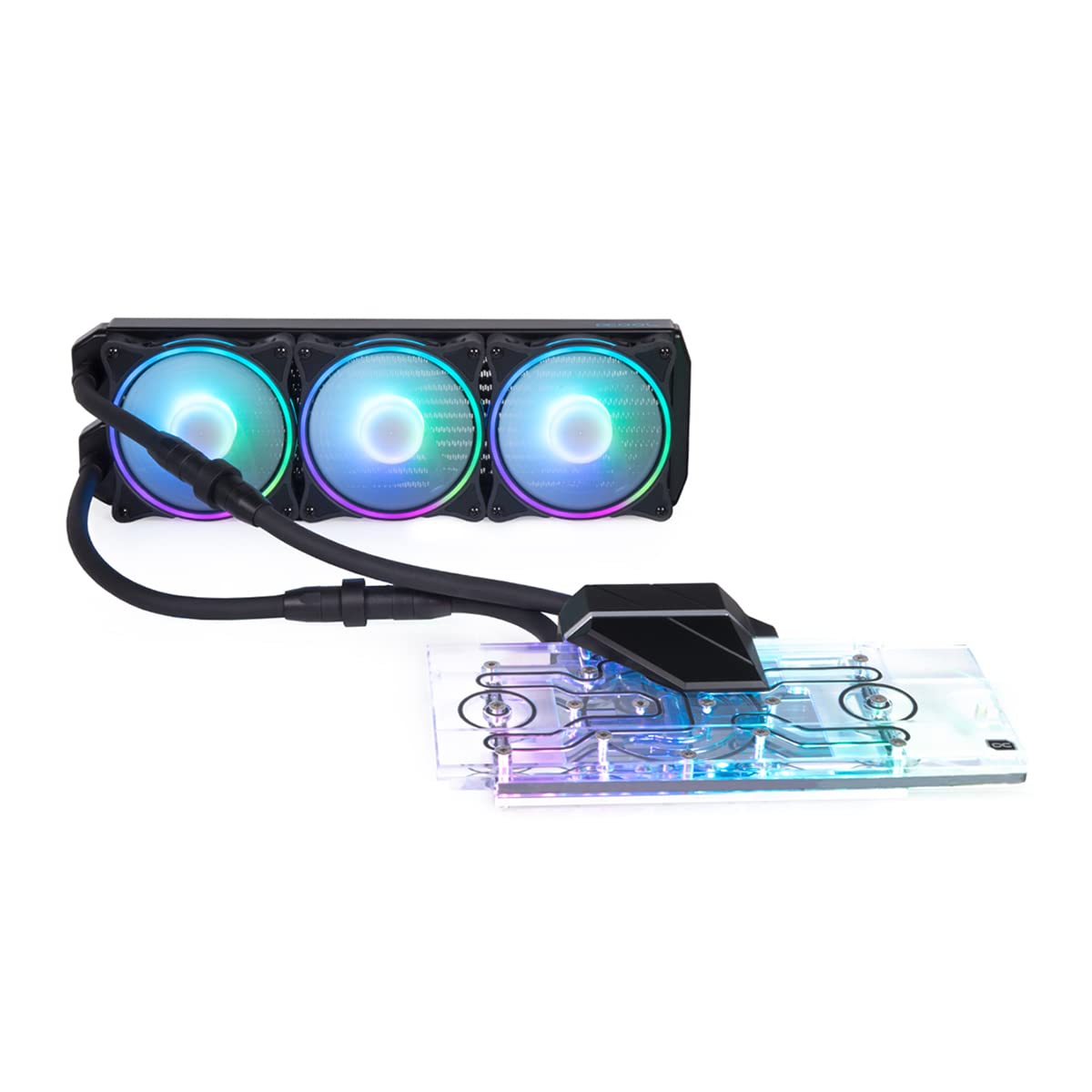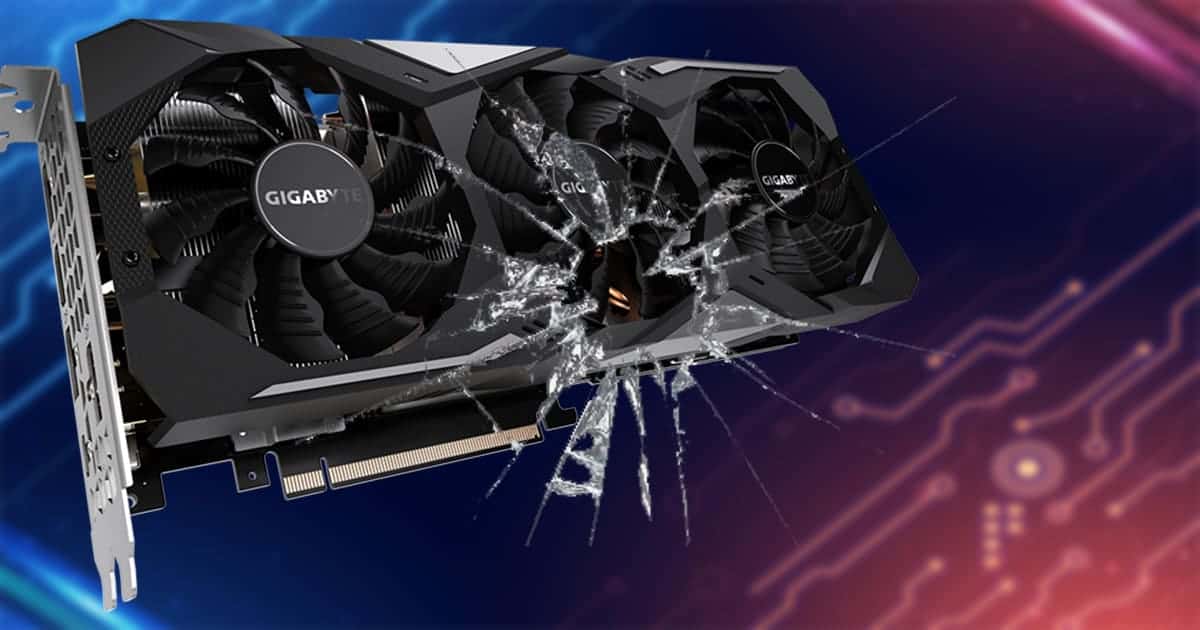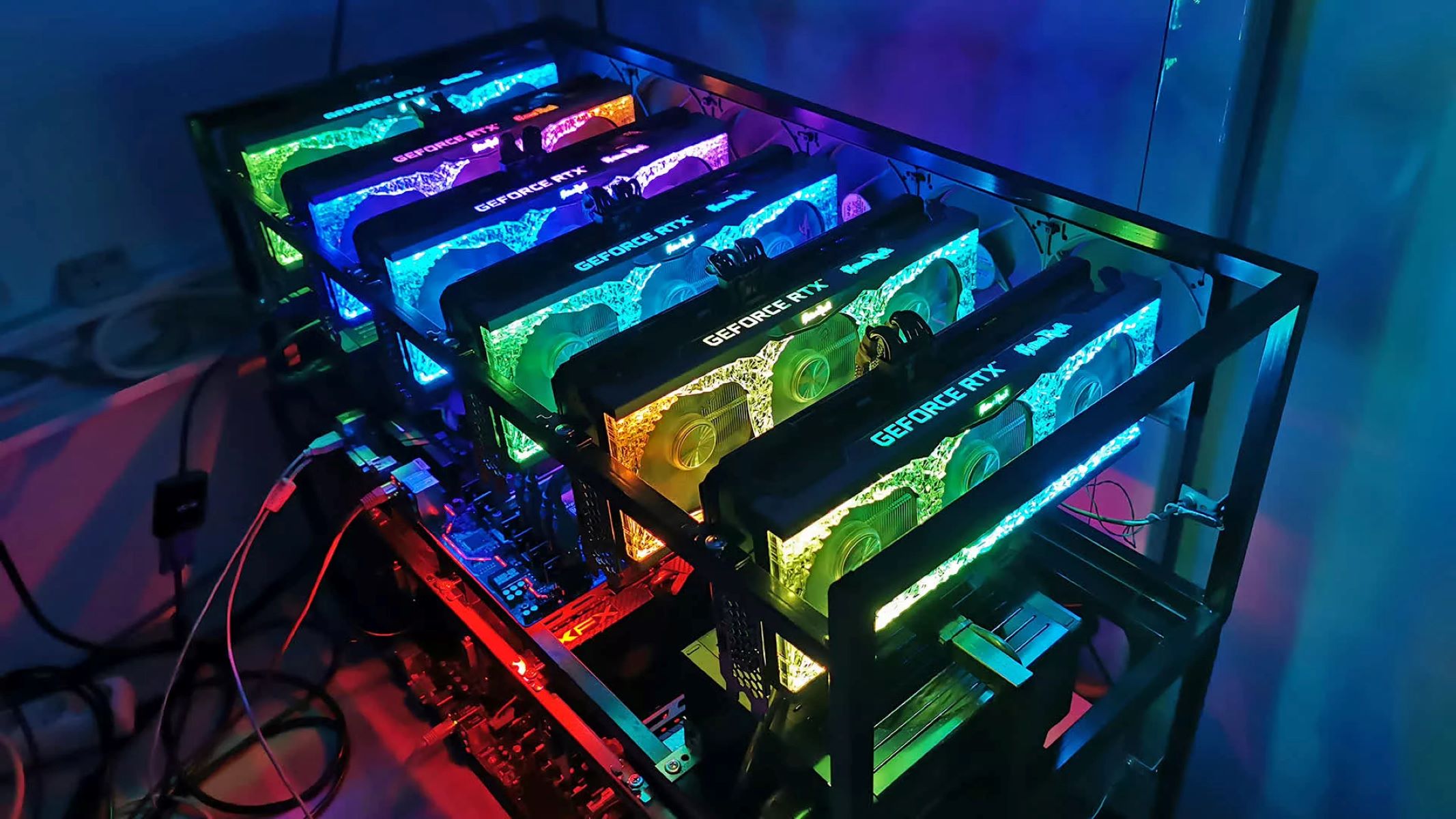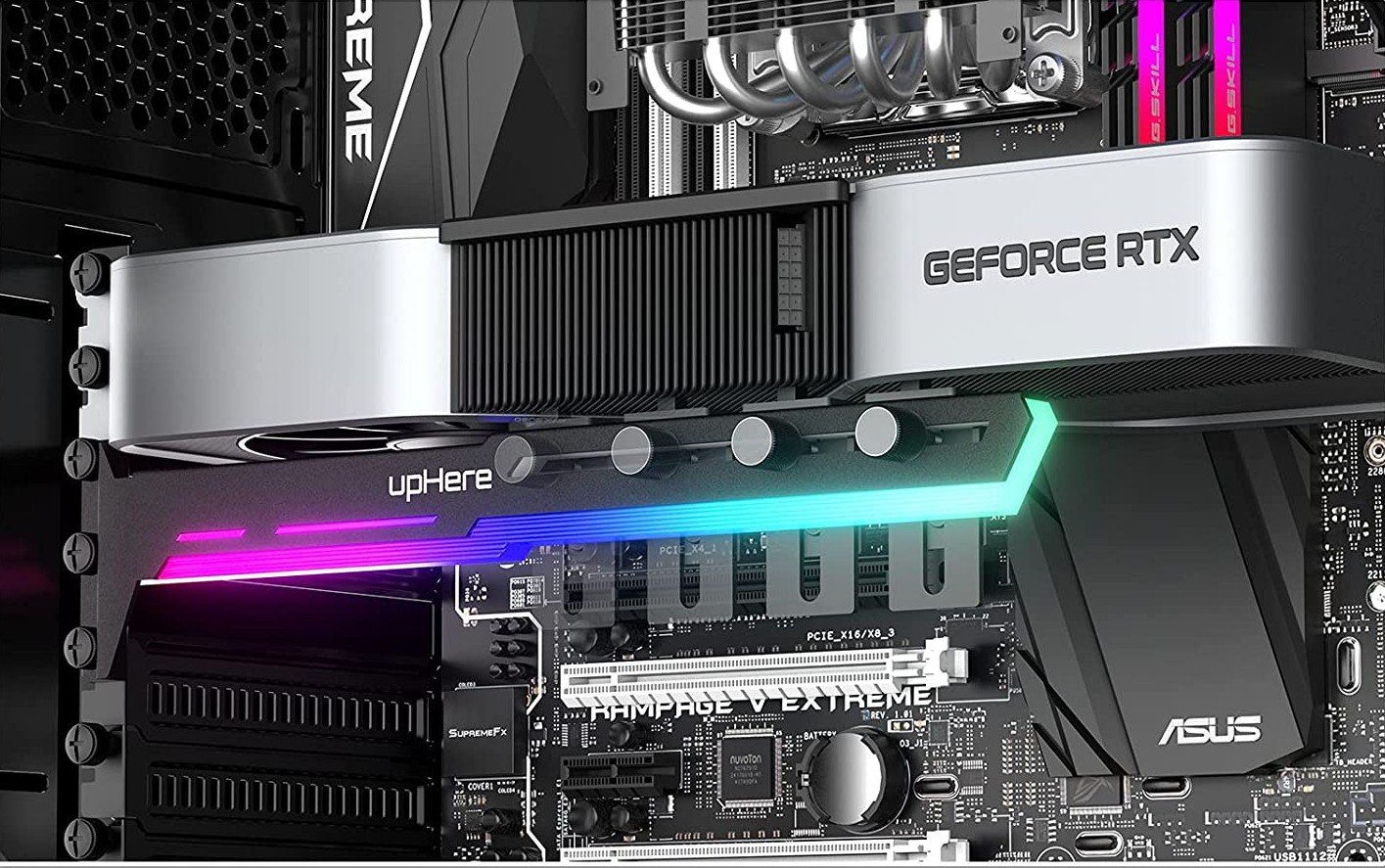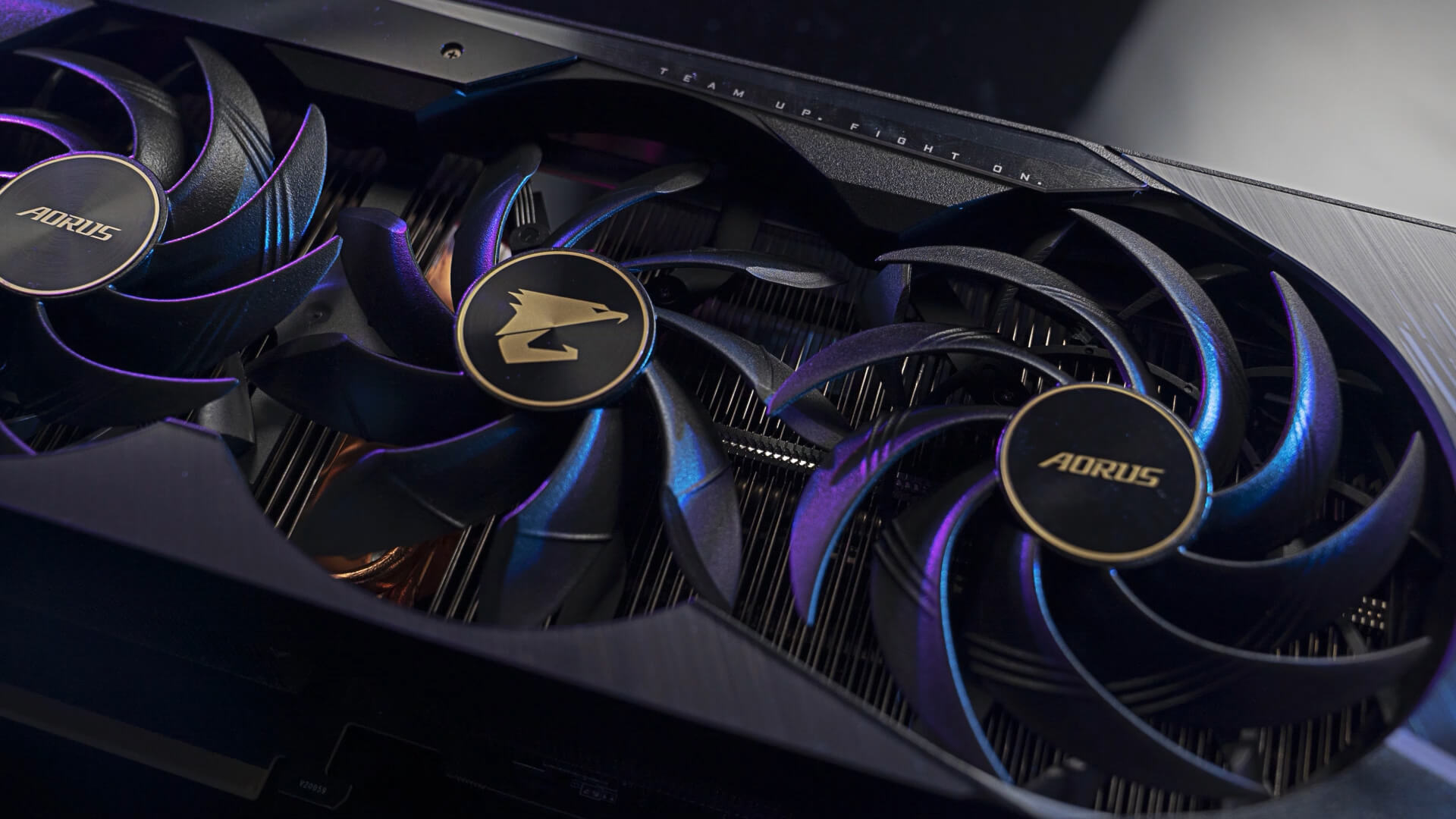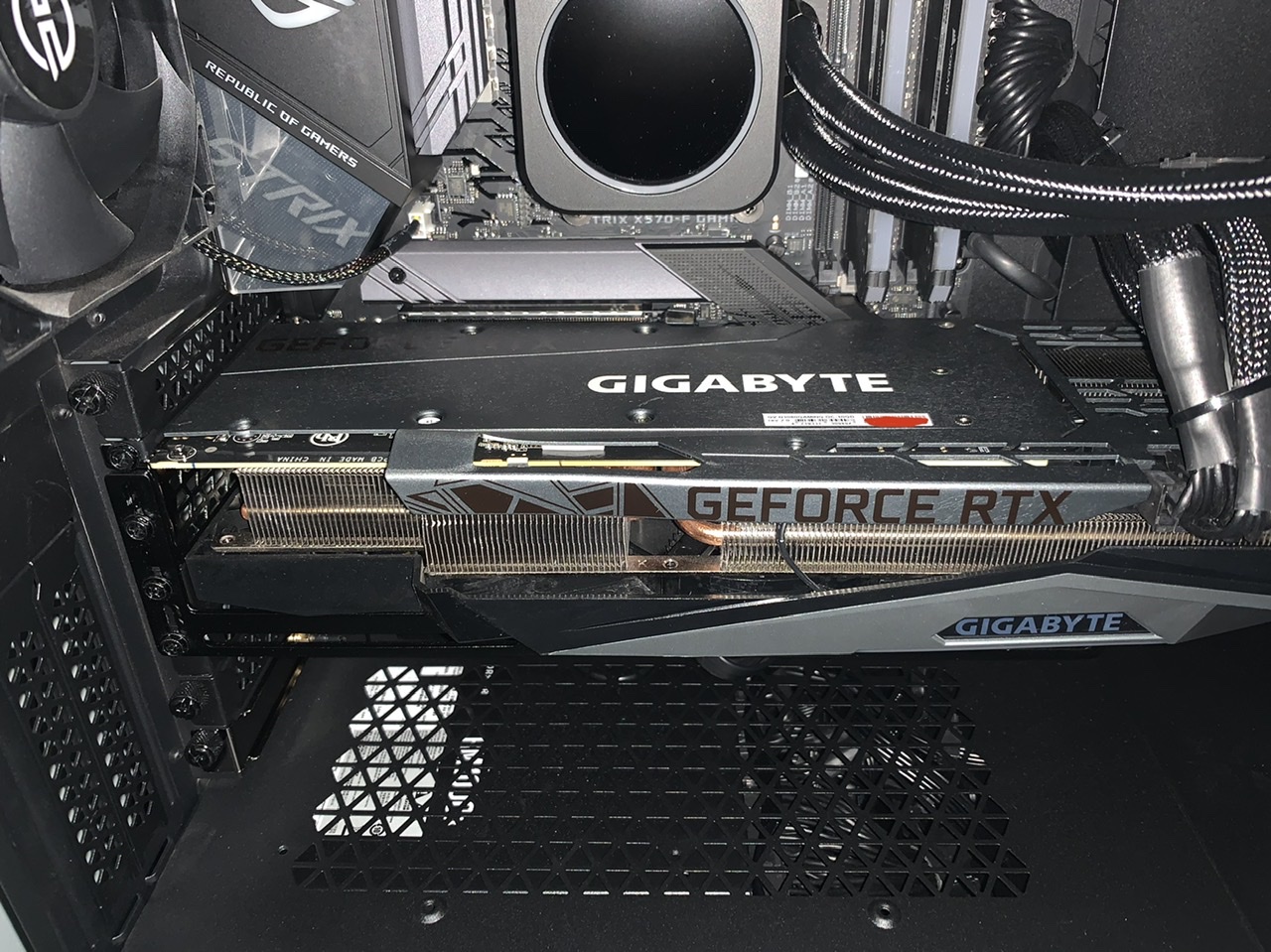Introduction
When it comes to high-performance computing, graphics processing units (GPUs) play a crucial role. They are responsible for delivering stunning visuals and handling complex calculations in various applications, including gaming, video editing, and scientific simulations. To ensure optimal performance, GPUs generate a significant amount of heat that needs to be efficiently dissipated. This is where the GPU fan comes into play.
The GPU fan is a vital component of the GPU cooling system. Its main purpose is to keep the graphics card operating within safe temperature limits by expelling heat generated by the GPU. Through a combination of airflow and cooling mechanisms, such as heat sinks and thermal pads, the GPU fan helps prevent overheating and keeps the GPU functioning at its peak performance.
Understanding how the GPU fan operates and when it turns on is essential for maintaining the health and longevity of your graphics card. While many factors can influence when the GPU fan starts spinning, it typically activates when the GPU temperature reaches a certain threshold. This dynamic fan control mechanism ensures that cooling is provided exactly when and where it is needed.
The behavior of the GPU fan is influenced by various factors, such as the GPU model, workload intensity, ambient temperature, and fan curve settings. In modern GPUs, dedicated software or firmware allows you to customize the fan curve, determining at what temperature the fan should start spinning and how fast it should operate at different temperature ranges. This level of control enables users to strike a balance between cooling efficiency and noise levels.
However, it’s worth noting that some GPUs come with a default fan curve optimized by the manufacturer. This curve aims to offer an optimal balance between cooling and noise under typical usage scenarios. Tinkering with the default fan curve might be necessary in certain situations, such as during overclocking or if you prefer a quieter or more aggressive cooling profile.
In the next sections, we’ll explore the factors that influence when the GPU fan turns on, the concept of a fan curve, manual fan control options, common issues, and troubleshooting steps.
What Is the GPU Fan
The GPU fan is a key component of the cooling system in a graphics card. Its primary function is to keep the GPU operating at a safe temperature by dissipating the heat generated during heavy computational tasks. GPUs are designed to handle intensive graphics processing, which can cause the GPU to heat up quickly.
The GPU fan works by creating airflow around the GPU, either by blowing air towards the heat sink or by pulling air away from it. The heat sink is responsible for absorbing the heat from the GPU and transferring it to the surrounding air. Without proper cooling, the GPU can overheat, leading to performance issues, system instability, and potentially even permanent damage.
Modern GPUs often come equipped with multiple fans, with some high-end models even featuring three fans or more. These additional fans provide enhanced cooling performance by improving airflow and increasing the overall cooling capacity. The number and configuration of fans can vary based on the GPU model and manufacturer.
It’s important to note that the GPU fan is typically controlled by the GPU itself or through dedicated software provided by the GPU manufacturer. This ensures that the fan speed and operation are optimized based on the GPU’s temperature and workload.
While the primary function of the GPU fan is cooling, it can also contribute to the overall noise level of the system. As the fan spins faster to dissipate heat, it can generate more noise. This is an important consideration for users who prioritize a quieter computing experience.
GPU fans are designed to be durable and reliable, but they can occasionally suffer from issues such as bearing failures or excessive noise. Regular maintenance, including cleaning the fans and ensuring proper airflow within the computer case, can help prolong their lifespan and prevent performance issues.
In the following sections, we will explore the factors that influence when the GPU fan turns on, the concept of a fan curve, manual fan control options, common issues, and troubleshooting steps to ensure the optimal performance and longevity of your graphics card.
Importance of the GPU Fan
The GPU fan plays a critical role in maintaining the optimal performance and longevity of a graphics card. Here are several reasons why the GPU fan is of utmost importance:
1. Temperature Regulation: GPUs generate a significant amount of heat during heavy computational tasks, such as gaming or rendering. The GPU fan helps dissipate this heat by expelling it from the system. Without proper cooling, excessive heat can build up, leading to thermal throttling, reduced performance, and potentially long-term damage to the GPU.
2. Performance Optimization: By keeping the GPU temperature in check, the fan ensures that the graphics card can operate at its peak performance. Overheating can cause the GPU to downclock or throttle, resulting in reduced frame rates, lag, or even system crashes. With an efficient cooling system, the GPU can maintain consistent performance, delivering smooth and uninterrupted graphics processing.
3. System Stability: Overheating can not only affect the GPU’s performance but also impact the overall stability of the system. Excessive heat can lead to system instabilities, random crashes, and unexpected shutdowns. The GPU fan helps maintain a stable temperature for both the GPU and other delicate components inside the computer, ensuring reliable operation even during demanding tasks.
4. Longevity and Reliability: High temperatures can accelerate the wear and tear on electronic components, potentially decreasing their lifespan. By actively cooling the GPU, the fan helps preserve its longevity and reliability. Regularly monitoring and maintaining optimal temperatures can significantly extend the lifespan of the graphics card, avoiding the need for premature replacements.
5. User Control and Customization: Many modern GPUs offer user control over the fan speed and operation through dedicated software. This allows users to customize the fan curve to their preferences, striking a balance between cooling efficiency and noise levels. With manual fan control, users can optimize the cooling system to suit their specific needs, whether they prioritize performance or a quieter computing experience.
Without a properly functioning GPU fan, the performance, stability, and longevity of the graphics card can be compromised. It is crucial to ensure that the GPU fan is clean, functioning correctly, and adequately supported by the overall cooling system. In the next sections, we will delve into the factors that influence when the GPU fan turns on, the concept of a fan curve, manual fan control options, common issues, and troubleshooting steps to help you maintain an optimal cooling solution for your graphics card.
Factors That Determine When the GPU Fan Turns On
The activation of the GPU fan is governed by several factors that determine when it turns on. Understanding these factors can help you better comprehend the behavior of your graphics card’s cooling system. Here are the key elements that influence when the GPU fan starts spinning:
1. GPU Temperature: One of the primary factors that determine when the GPU fan turns on is the GPU temperature. Each GPU has a predefined temperature threshold, also known as the “target temperature,” at which the fan is triggered. When the GPU temperature exceeds this threshold, the fan activates to cool down the graphics card.
2. Workload Intensity: The workload intensity, such as gaming or rendering, directly impacts the GPU temperature. As you engage in more demanding tasks, the GPU generates more heat, leading to a higher temperature. The GPU’s temperature monitoring system takes this into account and adjusts the fan speed accordingly to maintain optimal operating conditions.
3. Ambient Temperature: The ambient temperature of the environment in which your computer operates also affects the GPU temperature. Higher ambient temperatures can contribute to increased GPU temperatures even during lighter workloads. The cooling system, including the GPU fan, takes ambient temperature into consideration when determining fan speed to compensate for the external heat sources.
4. Fan Curve Settings: The fan curve is a customizable setting that controls the relationship between GPU temperature and fan speed. It allows users to define the fan speed at different temperature points. Manufacturers often set a default fan curve, but users can adjust it using manufacturer-provided software. Modifying the fan curve can fine-tune the balance between cooling efficiency and noise level, depending on individual preferences.
By considering these factors, the GPU fan operates intelligently, providing the necessary cooling as required. The advanced temperature monitoring and fan control mechanisms ensure optimal GPU performance while keeping temperatures under control. Some GPU manufacturers also implement intelligent fan control algorithms that assess the real-time workload and adjust the fan speed accordingly for enhanced efficiency.
Now that we have explored the factors that influence when the GPU fan turns on, let’s move on to understanding the fan curve and manual fan control options in the upcoming sections.
GPU Fan Curve
The GPU fan curve is a graphical representation of how the fan speed varies based on the GPU temperature. It allows users to customize the fan speed at different temperature ranges, offering a balance between cooling performance and noise level. The fan curve is typically adjustable through dedicated software provided by the GPU manufacturer.
Manufacturers often set a default fan curve that aims to provide an optimal balance between cooling efficiency and noise levels under typical usage scenarios. However, users can modify this curve to suit their specific needs and preferences. Some common options include:
- Aggressive Cooling: A steeper fan curve that ramps up the fan speed at lower temperatures. This option provides enhanced cooling performance, ensuring that the GPU remains at lower temperatures even during intensive workloads. However, it may result in increased noise levels.
- Quiet Mode: A flatter fan curve that keeps the fan speed relatively low, resulting in quieter operation. This option prioritizes lower noise levels but might allow the GPU temperature to be slightly higher under heavy loads.
- Custom Curve: The ability to create a personalized fan curve based on individual preferences. Users can define specific fan speeds at different temperature intervals, tailoring the cooling performance and noise levels to their liking.
Adjusting the GPU fan curve requires careful consideration of the specific GPU model, workload requirements, and personal noise tolerance. It is recommended to monitor the GPU temperatures and performance while testing different fan curve settings to ensure optimal cooling without compromising system stability.
Modifying the fan curve can be done using manufacturer-provided software, such as AMD Radeon Software or NVIDIA Control Panel. These tools offer intuitive interfaces that allow users to easily create, save, and apply custom fan curves to their graphics cards. It’s important to note that not all GPUs provide the same level of fan curve customization, so the options available may vary depending on the manufacturer and GPU model.
Understanding the GPU fan curve and making adjustments to it can help you attain the ideal cooling performance for your graphics card. In the next section, we will explore manual fan control options and considerations.
Manual Fan Control
Manual fan control allows users to take full control over the GPU fan speed, bypassing the default fan curve or any automated fan control algorithms. This feature is particularly useful for individuals who want precise control over their graphics card’s cooling performance and noise levels.
Many GPU manufacturers provide software utilities that enable manual fan control. These utilities allow users to adjust the fan speed in real-time or set a fixed fan speed for specific temperature ranges. By manually setting the fan speed, users can optimize the cooling system according to their preferences and specific workload requirements.
Before enabling manual fan control, it’s important to consider a few factors:
- Cooling Performance: Increasing the fan speed manually can provide better cooling performance and lower GPU temperatures, especially during intense workloads. However, higher fan speeds may result in increased noise levels. Finding the right balance between cooling and noise is crucial.
- Noise Level: By adjusting the fan speed manually, users can potentially reduce the noise generated by the GPU fan. This can be beneficial for those who prioritize a quieter computing environment. However, it’s important to ensure that lower fan speeds still provide sufficient cooling to prevent overheating.
- Risk of Overheating: When manually controlling the GPU fan, it’s essential to monitor the temperatures closely. Setting the fan speed too low may result in inadequate cooling, causing the GPU to overheat. Regularly checking the temperatures and ensuring they stay within safe limits is crucial for system stability and performance.
Enabling manual fan control allows users to have more fine-grained control over their graphics card’s cooling system. It is particularly beneficial for tasks such as overclocking or running demanding applications that require intensive GPU usage.
While manual fan control provides flexibility, it’s important to note that caution should be exercised. Setting fan speeds too high can lead to unnecessary noise, while setting them too low can risk inadequate cooling and potential overheating. Finding the right balance is essential.
By utilizing manual fan control options provided by GPU manufacturers, users can customize their cooling profiles, striking the ideal balance between cooling performance and noise levels. In the next section, we will explore common issues related to GPU fans and troubleshooting steps to resolve them.
Common Issues and Troubleshooting
While GPU fans are designed to be reliable and efficient, they can sometimes encounter issues that impact their performance. Understanding and troubleshooting these common issues can help ensure the optimal functioning of your graphics card. Here are some of the common problems you may encounter with GPU fans and possible troubleshooting steps:
1. Excessive Noise: If you notice that your GPU fan is producing unusually loud noise, it could indicate a problem. Dust accumulation or a faulty fan bearing might be the cause. To resolve this, try cleaning the fan and its surrounding components. If the noise persists, you may need to replace the fan.
2. Inconsistent Fan Speed: If the GPU fan speed varies irregularly or seems to be stuck at a low speed, it could be due to a driver issue or a malfunctioning fan controller. Ensure that you have the latest GPU drivers installed. If the problem persists, try reseating the graphics card or contacting the manufacturer for further assistance.
3. Overheating: If your GPU is consistently running at high temperatures or experiencing frequent thermal throttling, it could indicate poor cooling efficiency. Check the GPU fan and heat sink for dust accumulation and clean them if necessary. Ensure that the GPU fan is functioning correctly and that the airflow within the computer case is optimal.
4. Fan Not Spinning: If the GPU fan fails to spin at all, it could be a sign of a faulty fan motor or an issue with the fan power connection. Ensure that the fan cables are securely connected. If the problem persists, it may be necessary to replace the fan.
5. Fan Curve Misconfiguration: Customizing the fan curve improperly can result in inadequate cooling or excessive noise. Double-check your fan curve settings and make adjustments as needed. It’s important to find the right balance between cooling performance and noise level based on your specific requirements.
6. Driver or Software Issues: Occasionally, driver or software conflicts can affect GPU fan performance. Ensure that you have the latest GPU drivers installed, and consider reinstalling the GPU control software provided by the manufacturer. This can help resolve any compatibility issues that might be affecting fan functionality.
If you encounter any of these issues and the troubleshooting steps do not provide a satisfactory resolution, it’s advisable to contact the GPU manufacturer’s support team for further assistance. They can provide specific guidance based on your graphics card model and help troubleshoot the problem.
By understanding these common issues and following the appropriate troubleshooting steps, you can maintain the optimal performance and reliability of your GPU fan, ensuring efficient cooling for your graphics card.
Conclusion
The GPU fan plays a crucial role in maintaining the optimal performance and longevity of your graphics card. By effectively dissipating heat generated by the GPU, the fan ensures that the graphics card remains within safe operating temperatures. Understanding the factors that determine when the GPU fan turns on, such as GPU temperature, workload intensity, ambient temperature, and fan curve settings, allows you to make informed decisions regarding cooling performance and noise levels.
The GPU fan curve provides customization options, enabling you to define the relationship between GPU temperature and fan speed. This allows for a balance between efficient cooling and acceptable noise levels. Additionally, manual fan control empowers users to take full control over the fan speed, providing flexibility for specific workload requirements or personal preferences while maintaining thermal stability.
However, it’s essential to troubleshoot and address any common issues that may arise, such as excessive noise, inconsistent fan speed, overheating, or fan-related misconfigurations. Regular maintenance, including cleaning the fan and ensuring optimal airflow within the computer case, can prolong the lifespan and performance of the GPU fan.
Remember to always refer to the manufacturer’s guidelines and support resources for your specific GPU model to ensure appropriate troubleshooting and maintenance procedures. By taking care of your GPU fan and understanding its importance, you can optimize the performance and reliability of your graphics card, ensuring a smooth and immersive computing experience for various applications, from gaming to professional graphics work.







